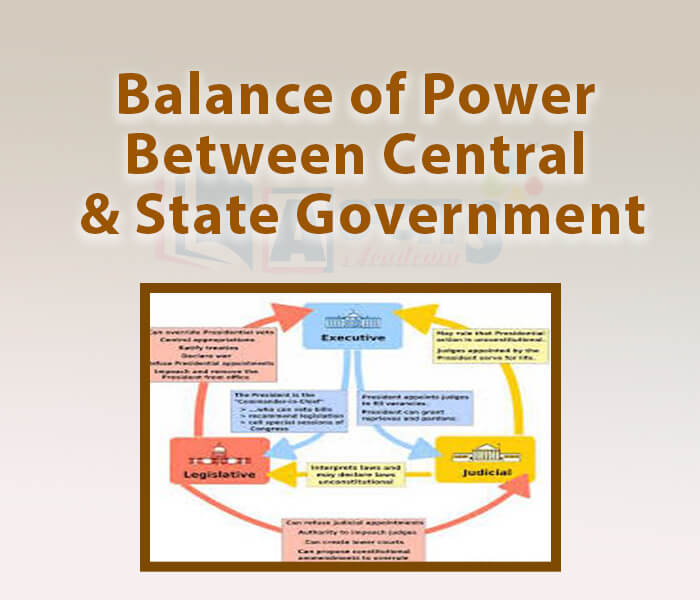Balance of Power between Central and State Government













Balance of Power between Central and State Government
Exact Balance of Power between Central and State Government: This balance depends mainly on the historical context in which the federation formed. Federations are formed in two ways
1. In the first type, states come together on their own to form a bigger unit and they have equal power and are equally strong vis-a-vis the federal government. They are coming together so that by pooling sovereignty and retaining identity, they can increase their security. USA, Switzerland and Australia are Coming Together Federations.
2. In the second type, the Central Government tends to be more powerful vis-a vis the states. Here, a large country decides to divide its power between the constituent states and the National Government. India, Spain and Belgium are examples of Holding Together Federations.
The constitution of India declares India to be __________________ | |||
| Right Option : A | |||
| View Explanation | |||
In which one of the following countries, there is not a Federal form of Government ? | |||
| Right Option : D | |||
| View Explanation | |||
Consider the following statements. There are two types of federations, 'coming together' and 'holding together'. Which of the following is correct about the 'holding together' type of federation ? | |||
| Right Option : C | |||
| View Explanation |
Students / Parents Reviews [10]
It was a good experience with Abhyas Academy. I even faced problems in starting but slowly and steadily overcomed. Especially reasoning classes helped me a lot.

Cheshta
10thI have spent a wonderful time in Abhyas academy. It has made my reasoning more apt, English more stronger and Maths an interesting subject for me. It has given me a habbit of self studying

Yatharthi Sharma
10thIt has a great methodology. Students here can get analysis to their test quickly.We can learn easily through PPTs and the testing methods are good. We know that where we have to practice

Barkha Arora
10thMy experience with Abhyas is very good. I have learnt many things here like vedic maths and reasoning also. Teachers here first take our doubts and then there are assignments to verify our weak points.

Shivam Rana
7thMy experience with Abhyas academy is very good. I did not think that my every subject coming here will be so strong. The main thing is that the online tests had made me learn here more things.

Hiya Gupta
8thBeing a parent, I saw my daughter improvement in her studies by seeing a good result in all day to day compititive exam TMO, NSO, IEO etc and as well as studies. I have got a fruitful result from my daughter.

Prisha Gupta
8thIt was good as the experience because as we had come here we had been improved in a such envirnment created here.Extra is taught which is beneficial for future.

Eshan Arora
8thOne of the best institutes to develope a child interest in studies.Provides SST and English knowledge also unlike other institutes. Teachers are co operative and friendly online tests andPPT develope practical knowledge also.

Aman Kumar Shrivastava
10thAbhyas is a complete education Institute. Here extreme care is taken by teacher with the help of regular exam. Extra classes also conducted by the institute, if the student is weak.

Om Umang
10thAbhyas Methodology is very good. It is based on according to student and each child manages accordingly to its properly. Methodology has improved the abilities of students to shine them in future.
